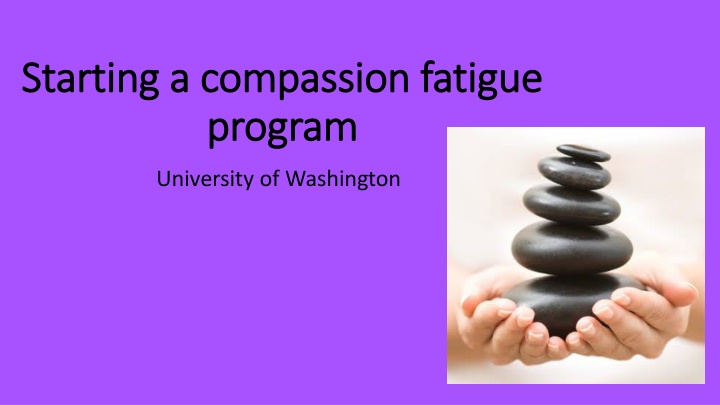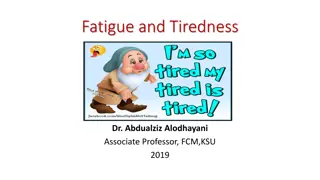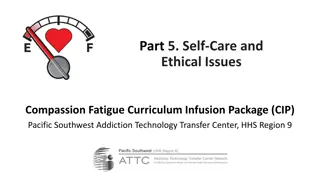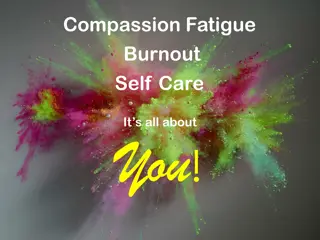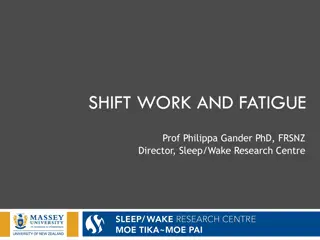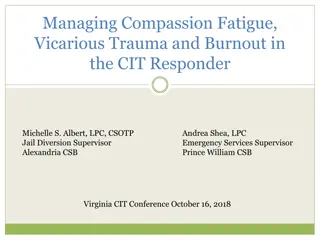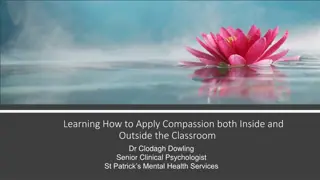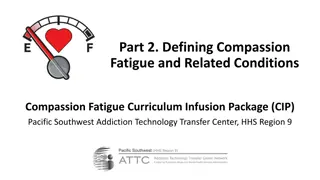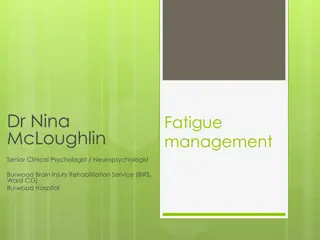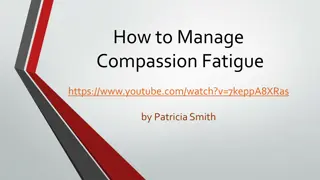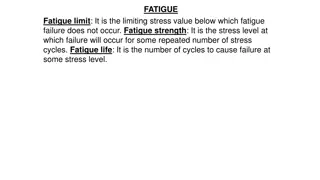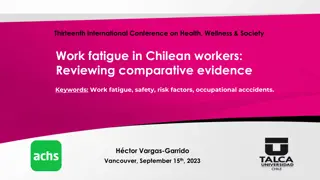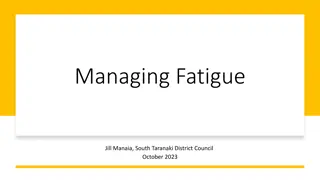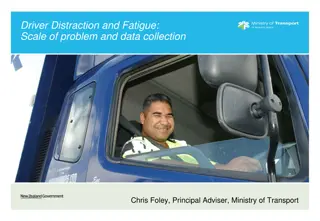Addressing Compassion Fatigue in University Environment
Compassion fatigue, a significant concern in caregiving roles, was identified through a needs survey at the University of Washington. Concerns included lack of support and communication. Suggestions for improvement included creating a supportive environment, offering coping strategies such as music and time with pets, and planning reflective meetings. Challenges included managing ideas and meeting logistics, but efforts are being made to address these issues. The program aims to enhance mental well-being and reduce compassion fatigue among University staff dealing with emotional strain.
Uploaded on Sep 14, 2024 | 2 Views
Download Presentation

Please find below an Image/Link to download the presentation.
The content on the website is provided AS IS for your information and personal use only. It may not be sold, licensed, or shared on other websites without obtaining consent from the author.If you encounter any issues during the download, it is possible that the publisher has removed the file from their server.
You are allowed to download the files provided on this website for personal or commercial use, subject to the condition that they are used lawfully. All files are the property of their respective owners.
The content on the website is provided AS IS for your information and personal use only. It may not be sold, licensed, or shared on other websites without obtaining consent from the author.
E N D
Presentation Transcript
Starting a compassion fatigue Starting a compassion fatigue program program University of Washington
What is Compassion Fatigue What is Compassion Fatigue Compassion Fatigue has been described as the cost of caring" for others in emotional and physical pain. (Figley, 1982) The most insidious aspect of compassion fatigue is that it attacks the very core of what brought us into this work: our empathy and compassion for others. (Mathieu, 2007)
The summer of 2016 information was gathered by way of a needs survey. Outstanding concerns were: Animals euthanized without advanced notification. Lack of communication in general. No one to talk to. No place to go/time to be by yourself to process/reflect. Breakrooms are unpleasant, work areas are drab.
Suggestions for improvement by the interviewees included: Finding people who can listen when you need to talk. Group activity available like a jigsaw puzzle. Place to write down thoughts, feelings, and to give thanks to the animals. Supportive environment where it is ok to feel how you are if you are sad. Having a quarterly gathering to talk about hard cases or tough losses. More information about the research.
Comments from the needs survey revealed coping strategies: Music. Time with pets. Animal adoptions from UW. Plants in workspaces. Hugs. Giving animals extra attention. Self-care and finding a good work/life balance is essential to reduce feelings of compassion fatigue.
NWABR Survey Results
Euthanasia stickers designed and distributed. Window project/improvements for breakrooms. Initial identification of peer counselors. Planning quarterly reflections meetings. Survey to measure D2C and sustainability. Gathering funding for projects. Puzzle exchange in place between two work areas. Presentations given. A workshop will be given at the AALAS National Conference in October. A name for our committee.
Some challenges: Too many ideas. Finding a good meeting space. Keeping to a regular meeting schedule. Remote access implemented. Time commitment constraints. Outreach uneven. Team needs to be empowered, keep management out of it.
Thank you!! To the animals, to the Office of Animal Welfare, University of Washington and to you. Are there any comments or questions?
